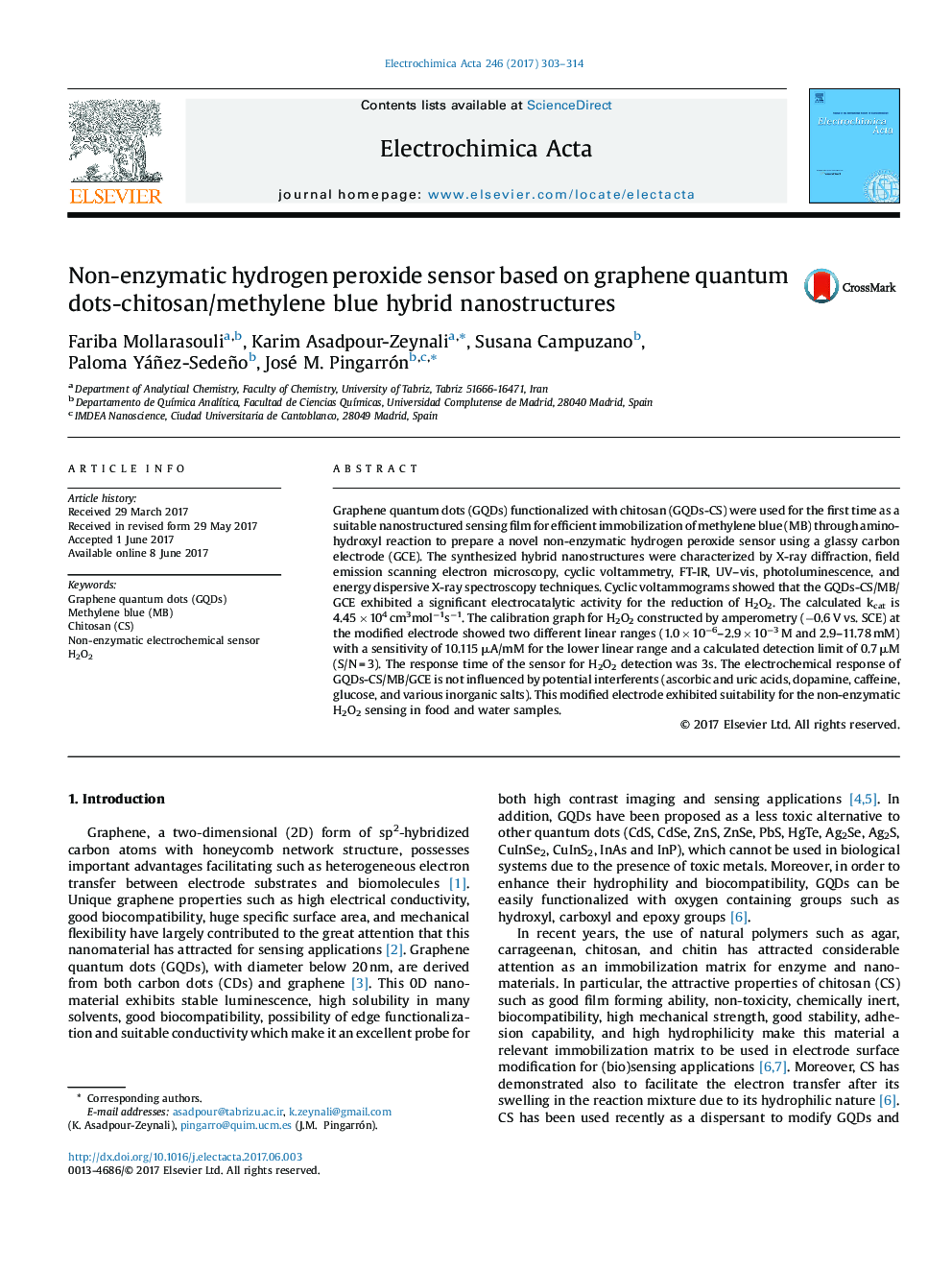| کد مقاله | کد نشریه | سال انتشار | مقاله انگلیسی | نسخه تمام متن |
|---|---|---|---|---|
| 6470457 | 1424111 | 2017 | 12 صفحه PDF | دانلود رایگان |
- A selective and sensitive non-enzymatic electrochemical biosensor based on GQDs-CS/MB nanocomposites was developed for the detection of hydrogen peroxide.
- The fabricated sensor has good selectivity, fast amperometric sensing, wide linear range low detection limit, excellent stability as well as biocompatibility and good reproducibility.
- GQDs-CS/MB/GCE successfully analyzed H2O2 in food and water samples without any interference from coexisting material.
- Our proposed sensor may be used as a promising platform to design and construct a low-cost portable kit for the detection of H2O2 in the future.
Graphene quantum dots (GQDs) functionalized with chitosan (GQDs-CS) were used for the first time as a suitable nanostructured sensing film for efficient immobilization of methylene blue (MB) through amino-hydroxyl reaction to prepare a novel non-enzymatic hydrogen peroxide sensor using a glassy carbon electrode (GCE). The synthesized hybrid nanostructures were characterized by X-ray diffraction, field emission scanning electron microscopy, cyclic voltammetry, FT-IR, UV-vis, photoluminescence, and energy dispersive X-ray spectroscopy techniques. Cyclic voltammograms showed that the GQDs-CS/MB/GCE exhibited a significant electrocatalytic activity for the reduction of H2O2. The calculated kcat is 4.45 Ã 104 cm3molâ1sâ1. The calibration graph for H2O2 constructed by amperometry (â0.6 V vs. SCE) at the modified electrode showed two different linear ranges (1.0 Ã 10â6-2.9 Ã 10â3 M and 2.9-11.78 mM) with a sensitivity of 10.115 μA/mM for the lower linear range and a calculated detection limit of 0.7 μM (S/N = 3). The response time of the sensor for H2O2 detection was 3s. The electrochemical response of GQDs-CS/MB/GCE is not influenced by potential interferents (ascorbic and uric acids, dopamine, caffeine, glucose, and various inorganic salts). This modified electrode exhibited suitability for the non-enzymatic H2O2 sensing in food and water samples.
131
Journal: Electrochimica Acta - Volume 246, 20 August 2017, Pages 303-314
